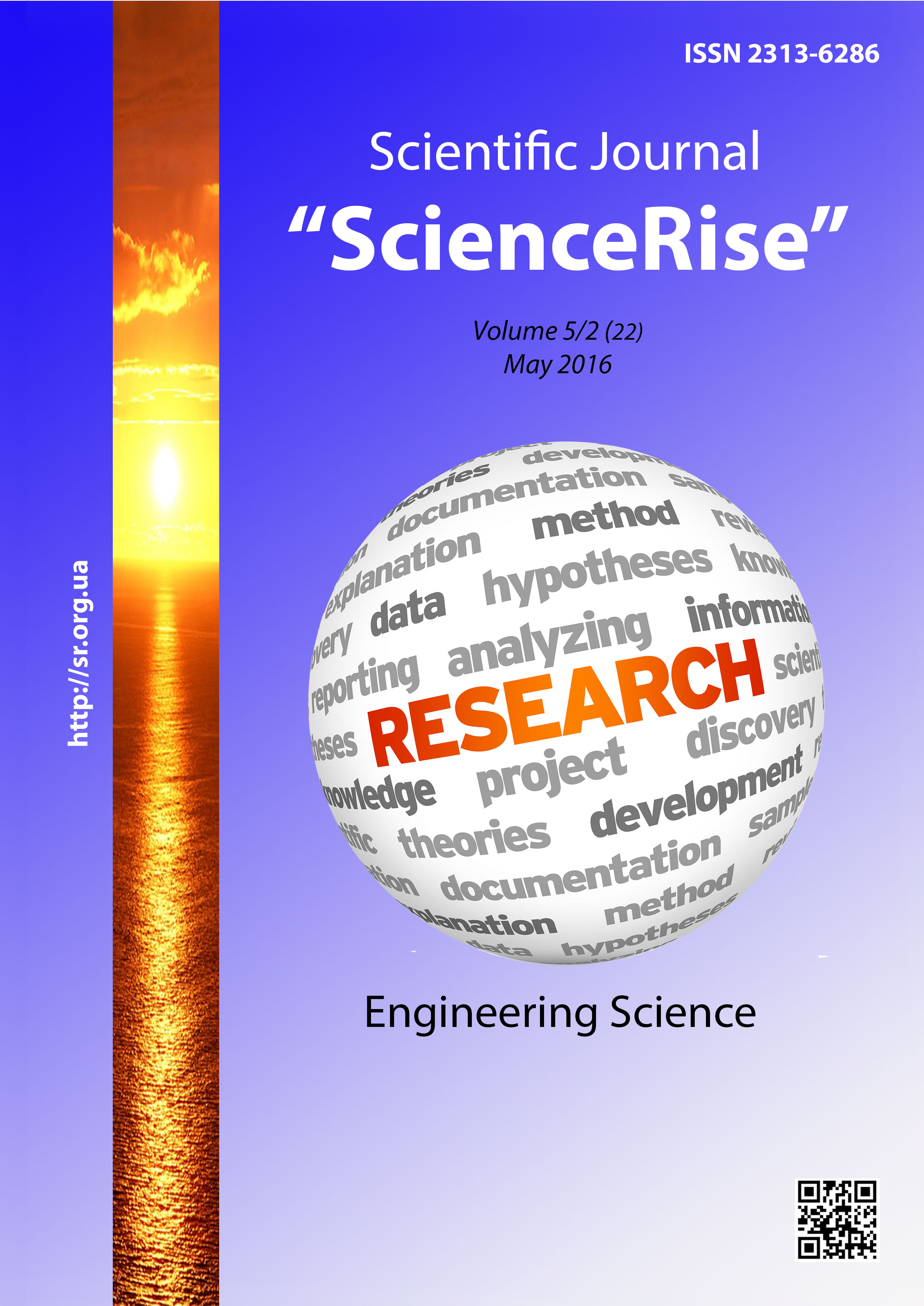Метод энергетического моделирования в применении к дифракции стационарных плоских упругих волн
DOI :
https://doi.org/10.15587/2313-8416.2016.69828Mots-clés :
дифракция упругих волн, неоднородности, метод энергетического моделирования, плоская деформация, напряженияRésumé
Энергетический метод использует теорему взаимности работ и преобразование возникающих гиперсингулярных интегралов для получения системы уравнений, состоящей из сингулярных интегральных уравнений первого и второго рода. Алгоритмы численного решения получаются методом дискретных особенностей. Точность вычислений контролируется за счёт алгоритмической диверсности. Показано приложение к численному моделированию дифракции стационарных плоских волн на конечных и периодических системах неоднородностей разных типов
Références
Guz, A. N., Kubenko, V. D., Cherevko, M. A. (1978). Diffraction of elastic waves. Kyiv: Nauk. dumka, 307.
Gladkij, A. V., Sergienko I. V., Skopetsky V. V. (2001). Numerical and analytical methods of research of wave processes. Kyiv: Nauk. dumka, 453.
Zenkevich, O., Morgan, K. (1986). Finite Elements and Approximation. Moscow: Mir, 318.
Podilchuk, Yu. N., Rubtsov, Yu. K. (1996). The use of radiological methods in problems of propagation and scattering of waves. Prikl. Mekhanika, 32 (12), 3–27.
Nazarchuk, Z. T. (1994). Singular integral equations in diffraction theory. National Academy of Sciences of Ukraine, KarpenkoPhysico-Mechanical Institute, 210.
Belotserkovskii, S. M., Lifanov, I. K. (1993). Method of Discrete Vortises. Boca Raton, CRC Press, 452.
Gandel, Yu. V. (2010). Boundary-value problems for the Helmholtz equation and their discrete mathematical models. Journal of Mathematical Sciences, 171 (1), 74–88. doi: 10.1007/s10958-010-0127-3
Gandel, Yu. V., Dushkin, V. D. (2012). Singular integral equations and numerical methods of discrete singularities. Kharkiv: ABB MVSU, 544.
Mishchenko, V. O., Patochkin, B. V. (2015). Accelerating the computation of the discrete currents method by modification takes into account the architectural features of a modern PCs. Visnyk KhNU imeni V. N. Karazina, 1056, 129–139.
Popov, V. G. (1999). Interaction of plane elastic waves with longitudinal defects. Mekh. tvyordogo tela, 4, 118–129.
Filshtinsky, L. A. (1991). The diffraction of elastic waves by cracks, holes and inclusions in isotropic medium. Mekh. tvyordogotela, 4, 119–127.
Shibahara, M., Taniguchi, Y. (1983). Application of the Integral Equation Method to the Elastodynamic Boundary-value Problems. Bulletin of JSME, 26 (222), 2054–2059. doi: 10.1299/jsme1958.26.2054
Nazarenko, A. M. (1990). Diffraction of shear waves on cylindrical inclusions and cavities in an elastic half space. Strength of Materials, 22 (11), 1669–1674. doi: 10.1007/bf00767156
Nazarenko, A. M. (1994). Dynamical problems on longitudinal shear of a half-space with nonhomogeneities. Journal of Mathematical Sciences, 70 (5), 1985–1990. doi: 10.1007/bf02110825
Nazarenko, A. M., Ostrik, V. I. (1990). A problem of dynamic bending of a sheet with a curvilinear crack. Soviet Materials Science, 25 (5), 499–502. doi: 10.1007/bf00731941
Nazarenko, O. M., Lozhkin, O. M. (2007). Plane problem of diffraction of elastic harmonic waves on periodic curvilinear inserts. Materials Science, 43 (2), 249–255. doi: 10.1007/s11003-007-0028-x
Nazarenko, A. M., Panchenko, B. E. (2010). The scheme of parallel computations in problems of diffraction of shear waves in the hole system in an infinite isotropic medium. Problems of programming. Kyiv, 2-3, 604–610.
Nazarenko, A. M. (2013). Modeling the interaction of harmonic P- and SV-waves with a periodic system of curvilinear sections based on the method of singular integral equations. Visnyk KhNU imeni V. N. Karazina, 1063, 125–135.
Nazarenko, A. M. (2015). Computational methods in problems of diffraction of elastic waves by inhomogeneities systems based on singular integral equations. Sumy: SumDU, 220.
Nowacki, W. (1975). Theory of Elasticity. Moscow: Mir, 872.
Téléchargements
Publié-e
Numéro
Rubrique
Licence
(c) Tous droits réservés Александр Максимович Назаренко, Виктор Олегович Мищенко 2016

Cette œuvre est sous licence Creative Commons Attribution 4.0 International.
Our journal abides by the Creative Commons CC BY copyright rights and permissions for open access journals.
Authors, who are published in this journal, agree to the following conditions:
1. The authors reserve the right to authorship of the work and pass the first publication right of this work to the journal under the terms of a Creative Commons CC BY, which allows others to freely distribute the published research with the obligatory reference to the authors of the original work and the first publication of the work in this journal.
2. The authors have the right to conclude separate supplement agreements that relate to non-exclusive work distribution in the form in which it has been published by the journal (for example, to upload the work to the online storage of the journal or publish it as part of a monograph), provided that the reference to the first publication of the work in this journal is included.

